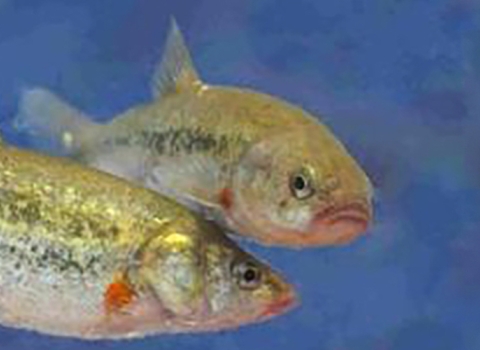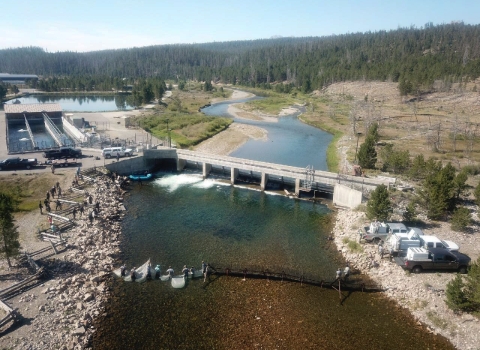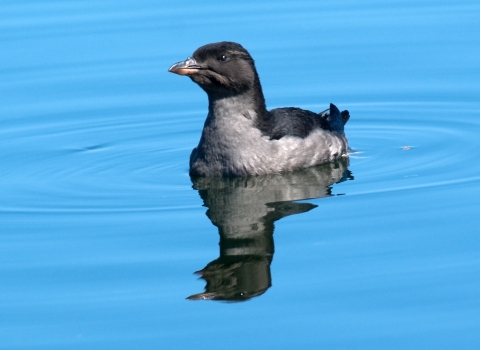Nearly 300 seabird carcasses have been counted on the beaches of St. Paul Island since October 8 of this year by biologists with the Ecosystem Conservation Office of the Aleut Community of St. Paul Island Tribal Government. Most of the species found have been tufted puffins, however, horned puffins, murres, and crested auklets have also been found. Since the die-off began, the rate of carcass encounter was more than 350 times greater than the normal rate of encounters. For comparison, only six puffin carcasses had been counted since 2006 when long-term beach monitoring began at St. Paul and St. George Islands.
The U.S. Geological Survey National Wildlife Health Center in Madison, Wisconsin, performed necropsies on eight of the Pribilof Island puffins to determine cause of death. The cause of death appears to be starvation. All eight puffins showed severe emaciation characterized by atrophy of breast and thigh muscles and complete absence of body fat. No pathogenic bacteria, viruses, or parasites were identified. These results are similar to the results found for common murres examined during the 2015?2016 Gulf of Alaska seabird die-off, during which hundreds of thousands of common murres were estimated to have died.
An estimated 6,000 tufted puffins and over 30,000 horned puffins breed on the Pribilof Islands during the spring and summer months. When the breeding season is over, the birds go out to sea until the following spring; therefore, the large number of puffins near the Pribilof Islands at this time of the year is unusual and is likely to include birds from other breeding colonies. Because only a fraction of birds that die at sea become beached, and even fewer are counted prior to removal by scavengers, the report of nearly 300 adult and juvenile seabirds washed up on the four monitored beaches at St. Paul Island raises concern.
While a specific cause of the seabird starvation and die-offs in the Gulf of Alaska and St. Paul Island remains unknown, there is an observed association between warm water events and seabird die-offs. Abnormally high sea surface temperatures in the North Pacific Ocean since 2013 may be linked to changes in prey distribution or abundance. Additionally, despite starvation appearing to be the cause of death, we will continue to test carcasses for infectious and non-infectious diseases and toxins as there could be multiple factors causing the emaciation/starvation.
The U.S. Fish and Wildlife Service, USGS Alaska Science Center, USGS National Wildlife Health Center, Coastal Observation and Seabird Survey Team (COASST), Aleut Community of St. Paul Island Tribal Government Ecosystem Conservation Office, National Oceanic and Atmospheric Administration, and the Alaska Department of Fish and Game will continue working together to examine carcasses, and share available information on forage fish and ocean conditions in order to better understand causes of starvation and potential population level impacts on seabirds in the Bering Sea.
Want to help?
The Coastal Observation and Seabird Survey Team (COASST) can connect you with existing citizen science survey teams and provides training in how to identify birds and collect high quality data that are shared with researchers and resource management agencies. Visit www.coasst.org to learn more or contact COASST at 1-206-221-6893 or email coasst@uw.edu.
To report sick or dead birds, call the U.S. Fish and Wildlife Service at 1-866-527-3358 or email AK_MBM@fws.gov.
Information to report includes:
- Date, Time, and Location (latitude/longitude if possible and length of beach searched)
- Type of bird(s) (species name or group e.g., murre, auklet, etc.)
- Number of birds observed (for each species)
- Description of carcass condition (fresh, recent, old, very old)
- Observer contact information (in case additional info is needed)
The U.S. Fish and Wildlife Service works with others to conserve, protect, and enhance fish, wildlife, plants, and their habitats for the continuing benefit of the American people. For more information, visit www.fws.gov, or connect with us through any of these social media at http://www.fws.gov/home/socialmedia/index.html.


